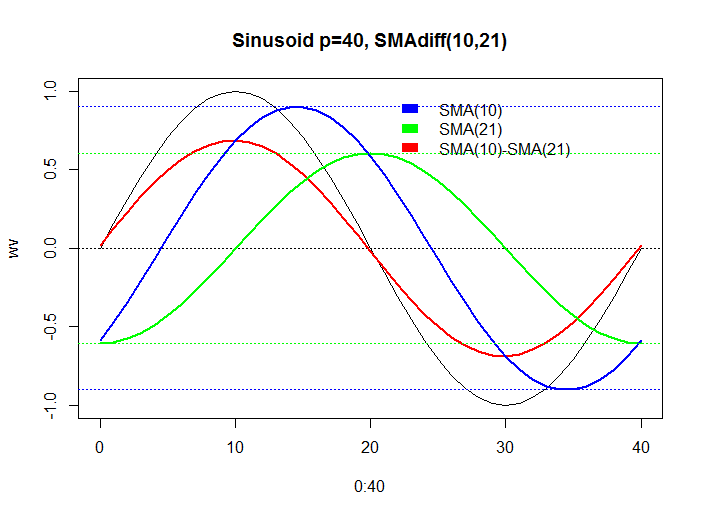Given a discretely sampled sinusoidal signal (frequency $1/40$), and 2 Simple Moving Averages (SMA), better known as FIR low-pass filters of order e.g. $10$ and $21$, it can easily be calculated what these filter's gain will be, using this formula: with $n$ the window length of the SMA, and $p$ the period of the sine wave:
$sin (n * pi/p) / (n * sin(pi/p)) $
(thanks to this post): I refer to the dotted blue and green lines in the image below:

Now, is it possible to calculate this directly (without measuring) for a difference of 2 SMA's? Or more broadly: if the coefficients / weights of a filter (in this case the difference of 2 SMA's) are known, can you calculate the change in amplitude directly?

